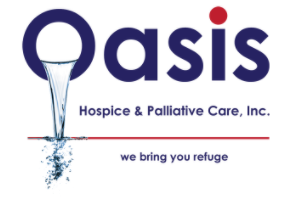While hospice care is widely recognized for its compassionate approach to end-of-life support. It’s important to consider all aspects, both the benefits and the potential drawbacks. For many families, hospice provides much-needed relief and guidance during a difficult time. However, there are certain limitations that can affect the experience, depending on the individual’s needs and circumstances.
Whether it’s about the scope of services, eligibility requirements, or emotional challenges, understanding the potential disadvantages is key to making fully informed decisions. Oasis Hospice care can provide invaluable emotional and physical support during a difficult time, but it isn’t without its drawbacks.
Those considering hospice for a loved one should weigh the pros and cons carefully, as hospice isn’t always the best option for everyone. So what exactly are these three possible downsides?
Cost Of Hospice Care
One significant disadvantage of hospice is the cost of respite and hospice care. In many cases, patients and families must bear the financial burden for a majority of the expenses associated with hospice services. Such costs may be compounded by existing medical bills and other fees related to healthcare treatments.
Limited Treatment Options
Although hospice provides comfort care, it does not provide curative treatments. In addition, even the most advanced pain control and symptom management may not be available due to its focus on providing comfort rather than curing an illness. This can cause families to feel frustrated and powerless in controlling the progression of the illness.
Feelings Of Guilt
One of the major disadvantages of hospice care is the emotional toll it can take on family members and loved ones. The decision to enter hospice care can be emotionally draining and difficult, as it signifies that a loved one’s life is coming to an end.
Hospice care can be logistically challenging for families who are already dealing with so much. Here are some common issues that arise:
- Difficulties managing multiple appointments for doctors, nurses, social workers, etc.
- Stressful financial strains due to additional medical costs not covered by insurance
- Needing to find reliable caregivers if family members are unable to provide support
- Navigating decisions about what kind of healthcare and treatments should be provided
These logistical challenges can add additional stress at an already emotional time for families.

Difficulty Accessing Resources
Hospice services may be limited in certain areas, making it hard to find the right type of care and support that’s needed. Insurance coverage for hospice services can vary widely, leaving families with gaps in coverage and high out-of-pocket costs.
Finally, there are often long wait times to get an appointment with a hospice provider or specialist, which can be frustrating and stressful for both patients and their loved ones.
Without access to a dedicated team of experts who understand the nuances of providing quality comfort care, it can be difficult to find the best possible solution for those facing terminal illnesses.
Difficulty Finding Qualified Staff
The difficulty of finding qualified staff is one of the disadvantages of hospice. It can be challenging to find enough hospice and palliative care providers with the experience, knowledge, and compassion needed to provide quality care for dying patients.
This challenge can lead to both understaffing and overstretching existing personnel, potentially resulting in poor quality experiences for patients and their families alike.
Potential For Unnecessarily Prolonged Suffering
The hospice experience can be a bittersweet one. It’s an emotionally charged journey through the valley of death, where those who are terminally ill come to accept their fate. This lack of control can lead to feelings of frustration and helplessness that further add to the patient’s emotional distress.
There is also a risk of unnecessarily prolonged suffering when it comes to hospice care. Despite its goal being to provide comfort and support for those in their final days, there have been cases where pain has been poorly managed or even ignored altogether.
The financial burden associated with hospice care may also be difficult for some families to bear. The cost of treatments and medications can be quite high, leading families down an uncertain path as they struggle to make ends meet during such an emotional time in their lives.
Frequently Asked Questions
How Can I Access Hospice Care?
Accessing hospice care is possible through a variety of sources. Generally, your healthcare provider can refer you to a hospice program that’s right for you and your family.
Is Hospice Care Covered By Insurance?
Hospice care is covered by most insurance companies. However, coverage does depend on the type of plan you have and the level of care needed.
What Type Of Support Can Hospice Provide For Family Members?
Hospice provides many types of support for family members, including emotional and spiritual care. Counselors, social workers, and other professionals are available to provide guidance through difficult times. They can also help families understand their loved one’s illness and make the most of the time they have together.
How Is Hospice Care Different From Palliative Care?
Hospice care and palliative care are both concerned with providing comfort and quality of life to those facing a terminal illness, but they differ in important ways. While hospice focuses on providing end-of-life care for individuals who have a limited life expectancy, palliative care is available to individuals at any stage in their disease and can be used alongside other treatments.
Are There Any Alternatives To Hospice Care?
These alternatives include home health care, which allows a patient to receive medical attention in their own home; palliative care, which is designed to reduce physical and emotional discomfort while providing support; and long-term care facilities, which can provide housing and medical attention for those who are unable to live at home independently.
Each of these options has its own advantages and disadvantages that must be considered before making a decision. But the question is what is usually not included in hospice ;our guide will help you learn more about it.
In-Home Hospice and Palliative Care in Chicago, IL
At Oasis Hospice Care, we’re honored to be a trusted source of comfort, compassion, and expert care for families across Chicago, Illinois. Whether you need in-home hospice care focused on end-of-life support or palliative care to manage serious illness, our dedicated team in Mount Prospect, IL is here to walk with you every step of the way.
We bring peace, dignity, and personalized attention right to your doorstep, ensuring your loved one receives the care they deserve in the place they feel most at home. Call us today at 708-564-4838 to learn how we can support you and your family.

